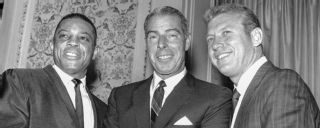|
After Tuesday, baseball's Hall of Fame will be a little more crowded. Probably. According to the baseball internet's most popular January locale -- Ryan Thibodaux's Hall tracker -- Mariano Rivera continues to race toward Cooperstown with a 100 percent success rate on known ballots. Less than half the ballots are accounted for, but for Rivera to drop from 100 percent this far into the process to suddenly below the required 75 percent when results are announced, well, that would be one impressive statistical anomaly. Rivera is getting in. And Edgar Martinez, the late Roy Halladay and, likely, Mike Mussina seem like good bets as well. Still on the outside, but not entirely without hope, are Curt Schilling, Barry Bonds, Roger Clemens and Larry Walker. If all of those players got in, thus joining veterans committee selections Lee Smith and Harold Baines, it would make for one long afternoon of speeches next July, when the hordes gather in that little picturesque pocket of upstate New York for the induction ceremony. But they won't all get in. There was a lot of consternation over the selection of Baines, and I didn't agree with the pick, either. Nevertheless, Baines probably won't be the worst player with a plaque hanging at the Hall of Fame. And even if he was, it's hardly a defect in his life story -- he'd merely be the least best among the greatest of his vocation. It's still rarefied air. Any reading of the Hall's history will quickly tell you that there have been some awfully questionable picks over the decades, most of them the result of the ever-changing amoeba known generally as the veterans committee. The floor for Hall membership is indeed low and if we put in every player who fit in between the floor (we can argue which player represents that) and the ceiling (probably Babe Ruth), the plaque room would be more crowded than Bourbon Street on Mardi Gras. There is no real consensus on a very fundamental question about the Hall of Fame, that being just how many people ought to be immortalized there. Some people are still arguing whether it should be a players-only institution, even though there are already 68 non-players enshrined. Big Hall, small Hall -- these are very imprecise terms affixed to a very imprecise process. That process has been tweaked numerous times since the first class was selected in 1936, and it's likely to evolve many times in the future. For now, though, the bottom line is cut and dried: If you're in, you're in, and if you're not, you're not. The black-and-white nature of this is fine, but it does mean that in the reverential corridor known as the Plaque Gallery, Ruth, Aaron, Mantle and Mays -- legends so legendary that first names are optional -- are on even footing with Lloyd Waner, Freddie Lindstrom and Tommy McCarthy. I always wonder how that looks for the casual Hall visitor. How many realize there was a big difference between High Pockets Kelly and Johnny Mize? Between Charlie Gehringer and Bill Mazeroski? Would it be worth it to understand that even the immortals exist in some sort of hierarchy? Intuitively, most history-conscious fans are well aware of this, but what if the Hall of Fame were arranged in tiers? That is, what if the Plaque Gallery were arranged less democratically? It's in chronological order now, according to date of induction, which does mean that when you get to the back, where the inaugural class was placed, you end up with the likes of Ruth and Ty Cobb and Honus Wagner. That's fitting, but it also freezes the status of those players for all time. What if instead, there were a series of rooms? As you passed from one room to the next, the players would become better and better until, at last, you arrived in something like a pantheon -- a space reserved for only those deemed to be the best of the best. This will almost certainly never happen in the physical world, but we can at least consider these metaphorical rooms and who might reside in them. Doing so would serve a couple of purposes, one of a more lasting impact, the other which helps us right now, as the Hall prepares to expand its membership just a little bit further. The larger goal would be to help us make sense of all those who are already there. Who, in the Hall of Fame, deserves to be just a little more famous than the others with plaques hanging in Cooperstown? And, after Tuesday, where will the new members fit into this hierarchy?
|

